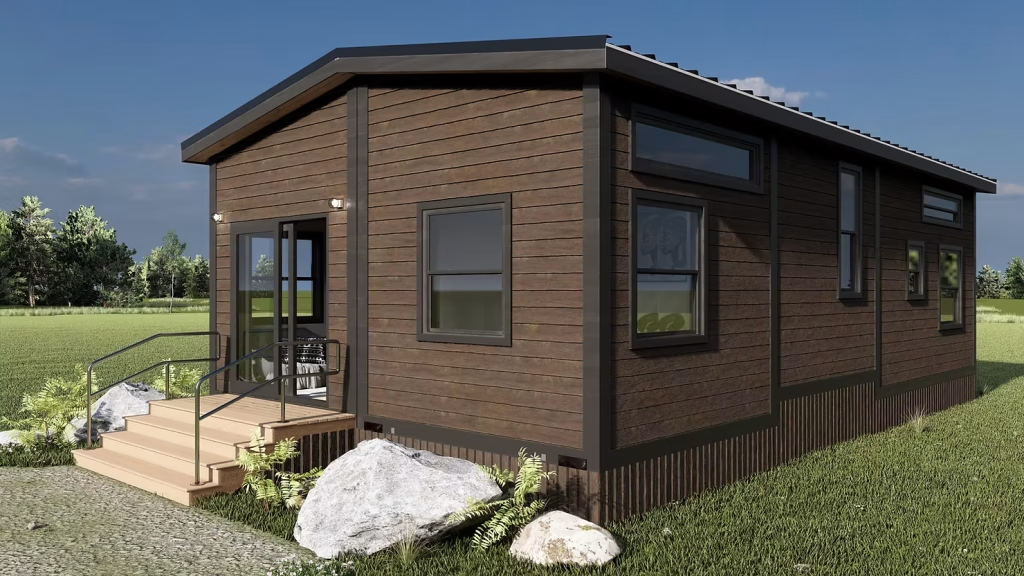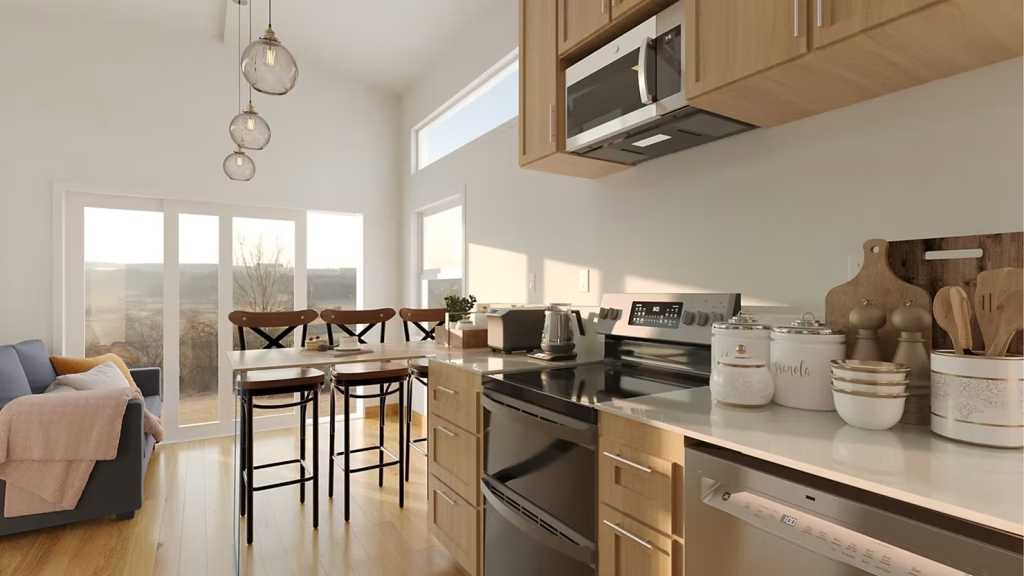
What comes to your mind when you think of a tiny home? Their names are quite self explanatory, and the popularity has skyrocketed in the last decade or so, sparking a ‘tiny-home movement’ across North America. So how did this whole concept of a tiny home come to fruition, and what exactly constitutes a tiny home and separates it from other types of dwellings?
The typical size of a tiny home ranges from 100-400 sq ft. Compact and easy to build, they can be put on any type of land. Tiny homes are cost effective solutions that have gained popularity in the past two decades, partly due to the 2007-2008 financial crisis, although it didn’t directly affect Canada. Their smaller size also creates a shorter construction output time, making the process more efficient. Many people who are looking for a more environmentally conscious dwelling are also attracted to tiny homes.
Currently, the majority of tiny homes are used for personal residential purposes and serve as main dwellings. But many people do get creative with tiny homes, as it does provide extra space at a lower cost. A tiny home can be used as office space, a vacation/weekend home, a homeschooling space, a studio for work hustles, and more. The possibilities for a tiny home are practically endless. Unfortunately, tiny homes often face stigma and do hold some structural societal barriers. Mobile homes, which are very similar to tiny homes, even face a greater stigma as they are seen as housing for people who are ‘impoverished’ and are often a necessity for those who live in them. Tiny homes, however, are often perceived as more polished and sophisticated compared to mobile homes, largely because they are commonly associated with middle-class lifestyles and intentional downsizing rather than from necessity. Here at LandSeed, our goal is to demystify tiny homes and make it more accessible for more people, and this blog post will serve as our first introduction of our goals and plans for tiny homes.
The Finances of Tiny Homes
- An exciting way to fund your tiny home through a federal initiative is the Secondary Suite Loan Program, launched in April 2024. Originally capped at $40,000, an $80,000 loan is available for homeowners to convert and create rental units on their properties, from basement suites to an aforementioned tiny home. At a 2% interest rate over 15 years, it is a great option for homeowners planning smaller renovation projects to create secondary suites. This initiative is just the beginning for federal funds allocated towards different dwellings as the market continues to grow.
- Another way to finance a tiny home is through private industry means. The Royal Bank of Canada (RBC) recently also introduced their enhanced residential construction mortgage program that now enables homeowners to finance the addition of laneway homes, garden suites, modular units, and similar types of dwelling units. There are also many different financing companies that provide loans to build a tiny home, as well as tiny home construction companies providing financing built in with the purchase. Our partnership with Humble Creek features financing through the company, making the process easier and simpler.
- Other ways that one could finance a tiny home include RV loans, chattel mortgage (used for moveable properties), a personal loan or a line of credit, a construction loan (specifically designed for funding construction projects), personal savings, specific tiny home financing, and more.
Tiny Homes: a sustainable option?
